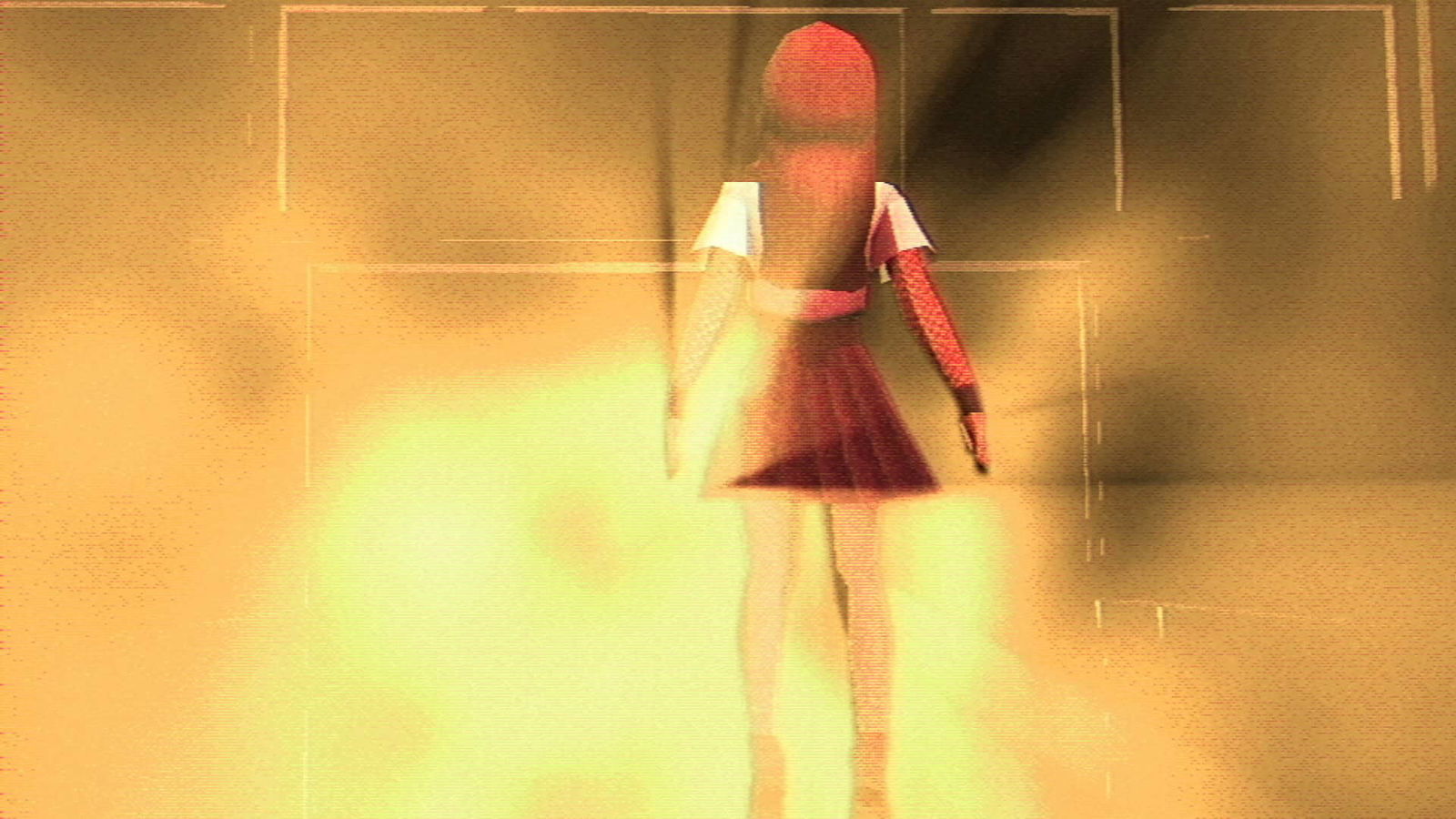It’s been a great season, let alone a good year, for retro-inspired horror games. The latest is Fear the Spotlight, a PS1-visual-toting horror taking place at a haunted high school. The first-ever horror game published by horror juggernaut Blumhouse, immediately caught my eye at September’s PlayStation State of Play. So, let’s shine a spotlight on it, shall we?
Game Name: Fear the Spotlight
Platforms: PlayStation 4, PlayStation 5 (Reviewed), Xbox One, Xbox Series X/S, Nintendo Switch, and PC
Developer: Cozy Game Pals
Publisher: Blumhouse Games
Release Date: October 22nd, 2024
Price: $19.99
Our tale of terror kicks off with two teens sneaking into the school after dark. If that alone wasn’t recipe enough for a horror story, they’re specifically sneaking in to play with a Ouija board in the library. We quickly learn that Amy, the rebellious one, got Vivian, the nerdy one who works there, to suggest the library add it to their display on the supernatural.

Split Up and Search for Backstory
Despite their different backgrounds, cool kid and nerd, this breaking-in breakfast club gets along well. It’s refreshing and intriguing to see the dynamic of the duo consist of two people who really vibe when you expect them to butt heads. Quite the contrary, their dialogue feels natural and playful. This is kudos to the writing but also the voice actors, and you can hear the affection seep through, such as when Amy ribs Vivian for becoming “volunteer of the month.”
That’s not to say they don’t have their secrets. Vivian has a letter that you, the player, only learn about once you open her inventory for the first time. You can try to examine it, but she’ll just say it’s for Amy at the end of the night. It seems like their chemistry might be more than as friends, or so Vivian hopes.
And that’s hardly the greatest mystery of the evening, as you quickly learn that the school was rebuilt after a fire killed a number of students. So naturally, the seance goes awry pretty quickly, separating our two heroines. The immediate scene after is a masterclass in horror game dread, as players have to ohh sooo sloooowly re-light each candle before taking one to explore the darkened library.
Hands-on Horror
On a side note, I love the old-fashioned point-and-click style of interacting with objects here. The navigation takes a contemporary approach; Vivian can walk, run, and sneak in any direction. But interacting with objects involves guiding a cursor to the specific part of the object that requires moving. There’s a nice touch in that the cursor will change depending on the action one must take. And Vivian will comment on what has to happen to clue players in to said action. Some games don’t pull off this kind of object interaction well. But here I found it responsive and tactile, with only a few finicky exceptions.
Metal Fear Solid
And so, by navigating the school and interacting with the environment, players scour the area in search of their missing companion. But there’s also another character in this drama that gives Fear the Spotlight its title: The Spotlight.
Taking a page out of Pyramid Head’s book of having a bizarre thing for a head, The Spotlight is a man with—can you guess—a spotlight for a head. Occasionally he crops up to search for Vivian, prompting stealth sections that come into play. Stealth can prove hit-or-miss, especially in retro games, but thanks to the smooth controls and clear ray of light, sneaking around in Fear the Spotlight feels tense yet fair.
I will say that one of my stealth horror pet peeves is when a game tasks you with solving a multi-step puzzle while having to evade your pursuer. I’ve only seen Resident Evil 2 nail this, and even that sets some boundaries. So, by typically keeping puzzle-solving and stealth adjacent yet separate, Fear the Spotlight mostly avoids this issue. Mostly. There’s just one frustrating segment involving copying disks that intends to come off as tense but instead proves frustrating. In fact, it’s the only time the game crashed, upon simultaneously solving a puzzle while getting caught. But otherwise, the stealth sections with The Spotlight are suitably eerie.
Fear the Spotlight but also the Creepy Kids
And these suspenseful moments aren’t even the creepiest aspects of Fear the Spotlight. Every now and then, when you least expect it, a ghostly child will appear on the periphery. It consistently gives chills, even as the low-res cretin simply peaks at you with a similar animation every time. Still, periodically Fear the Spotlight mixes things up to keep you on your toes. One variation involving multiple creepy children legitimately sent shivers down my spine, as I thought I had known what to expect.
And once you finish Vivian’s story, you unlock Amy’s perspective. I imagine players may skip this, thinking it’s similar, but it’s a completely different version of events. It’s also slightly shorter. But I actually enjoyed it even more than Vivian’s tale.
Instead of telling the story of what happened at the school, this section highlights Amy’s personal family history. While the core themes of young love are still present, it focuses more on the complexities of family, tugging at the heartstrings. If that’s not all, it has some of the best puzzles and arguably the creepiest enemy in the game—inspired by a certain Japanese horror movie.
Fear the Spotlight wears its inspiration proudly on its sleeve, aping classic horror games while unraveling its own intriguing mystery. It’s not a long game, with both acts clocking in at about four to five hours total. But like the soot and char on the walls of Sunnyside High, Fear the Spotlight will likely linger with me for a while.
Fear the Spotlight Review
Summary
With satisfying and story-related puzzle and genuine chills, Fear the Spotlight delivers a top-notch, bite-sized, lo-fi horror experience. Contrary to its title, it steps into the spotlight as the best indie horror game of the year.
Pros
- Engaging puzzles that move the story forward
- Genuinely creepy moments
- Intriguing mystery and overall narrative
- Tactile interactive elements
Cons
- One stealth-puzzle section that doesn’t shine so bright
-
Fear the Spotlight Review





